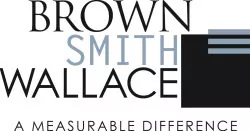On August 26, the Financial Accounting Standards Board (FASB) published an update to U.S. Generally Accepted Accounting Principles (GAAP) that aims to improve and clarify eight parts of existing guidance on cash flow statement presentation and classification. The update addresses some frequently asked questions about what is considered a complex area of accounting.
A Need for Clarity
Current U.S. GAAP in Topic 230, Statement of Cash Flows, provides guidance on classifying and presenting cash receipts and payments into the following categories:
- Operating activities (such as net increases or decreases in accounts receivable),
- Investing activities (such as cash expenditures for equipment), or
- Financing activities (such as new capital contributions from owners).
Critics say the guidance on classifying and presenting cash flows is confusing and, at times, contradictory. In fact, cash flow statement reporting is a leading cause of company financial restatements.
In April 2014, the FASB started work to clarify the most confusing parts of cash flow reporting by trying to come up with a broad principle to determine how items should be classified. A year later, board members realized it would be a more complex endeavor than they'd thought and decided instead to focus on a narrow list of specific problems, which it passed on to the Emerging Issues Task Force (EITF). This assignment was considered unusual because the EITF typically handles questions that can be resolved in one or two meetings. But the cash flow project was a larger undertaking.
Eight Areas of Improvement
The result of the EITF's undertaking, Accounting Standards Update (ASU) No. 2016-15, Statement of Cash Flows (Topic 230) — Classification of Certain Cash Receipts and Cash Payments: A Consensus of the FASB Emerging Issues Task Force, makes eight targeted changes to how cash receipts and cash payments are presented and classified in the statement of cash flows.
Here's a summary of what the update will require:
- Debt prepayment or debt extinguishment costs — penalties paid by borrowers to settle a debt ahead of time — should be classified as cash outflows for financing
- Cash payments attributable to accreted interest on zero-coupon bonds should be classified as a cash outflow for operating The portion of cash payments attributable to principal should be classified as a cash outflow for financing activities. (Zero-coupon bonds are a type of debt security that are issued or traded at significant discounts.)
- Cash payments for the settlement of a contingent consideration liability made by a business after it buys another business should be separated and classified as cash outflows for financing activities and operating (Contingent consideration is typically an obligation to transfer additional assets or equity interests to the former owners of the acquired business if certain conditions are met.)
- Proceeds from the settlement of insurance claims should be classified based on the type of insurance coverage and the type of loss. For example, a claim to cover destruction of a building would be classified in investing Conversely, a claim to cover loss of inventory would be classified in operating activities.
- Proceeds businesses receive from corporate-owned life insurance on employees' lives should be classified as cash inflows from investing Cash payments for premiums on these policies may be classified as cash outflows for investing activities, operating activities — or a combination of the two.
- Distributions received from equity method investees should generally be treated as returns on investment and classified as cash inflows from operating activities — unless the investor's distributions received (less distributions received in prior periods that were determined to be returns of investment) exceed cumulative equity in earnings recognized by the investor. When such an excess occurs, the current-period distribution up to this excess would be classified as cash inflows from investing
- Beneficial interests in securitization transactions should be disclosed as a noncash activity, and cash receipts from payments on a transferor's beneficial interests in securitized trade receivables should be classified as inflows from investing (Securitization transactions are common among financial companies, large retailers and credit card companies.)
- When cash receipts and payments have characteristics of more than one type of activity, the business should look at the activity that is likely to be the "predominant" source of cash flows for the item. The "principle of predominance" requires the use of judgment when it's unclear how cash flows should be classified.
"The amendments are an improvement to GAAP because they provide guidance for each of the eight issues, thereby reducing the current and potential future diversity in practice," says the FASB's update.
Time for Change
The updated guidance goes into effect for public companies for fiscal years beginning after December 15, 2017, and quarterly periods within those fiscal years. Privately held businesses have an extra year to implement the changes. Early adoption is permitted, however.
If you have questions about the updated guidance, please contact Dan Ward, Principal, Audit Services, at 314.983.1237 or dward@bswllc.com.
The content of this article is intended to provide a general guide to the subject matter. Specialist advice should be sought about your specific circumstances.

